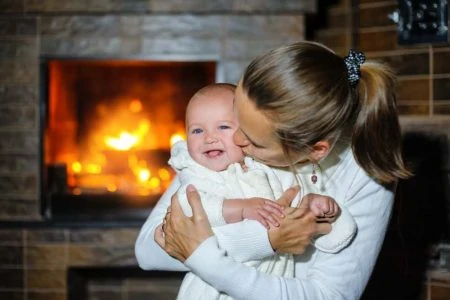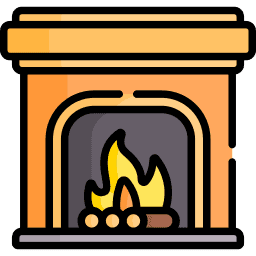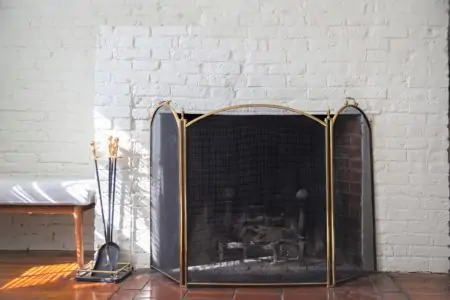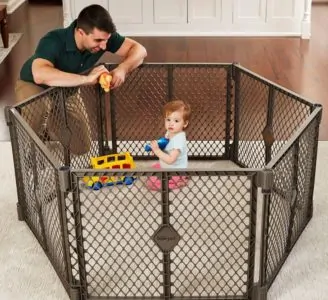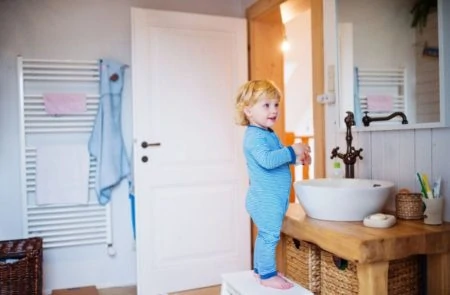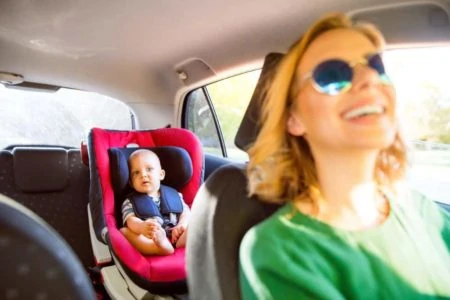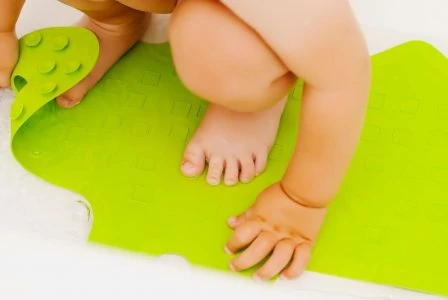Fireplaces are the cozy heart of the home, especially during winter months. However, once your baby starts crawling or cruising, that warm hearth turns into a zone of sharp edges, hard brick, and hot surfaces.
Babyproofing this area is often tricky because fireplaces come in unique shapes and sizes. Standard gates used for doorways rarely fit wide hearths or awkward angles.
We have explored the best safety methods to find solutions that don’t involve boarding up your fireplace forever. Here is how to babyproof your fireplace effectively while keeping your living room looking great.
Key Takeaways
- Restrict access: Use hardware-mounted baby gates or specialized fireplace screens to create a safe barrier around the entire area.
- Soften the blow: Cover sharp brick or stone edges on the hearth with high-density foam bumpers or custom cushions.
- Secure the doors: Install heat-resistant locks on glass doors to prevent pinched fingers and burns from residual heat.
- Monitor the air: Install carbon monoxide detectors and schedule annual chimney cleanings to ensure invisible safety.
How to Babyproof the Fireplace
Keeping your little one away from flames and blocking access to the hearth are essential parts of babyproofing. You need to treat the hearth, the doors, and the surrounding area as separate risks.
We broke down fireplace safety into manageable tasks. Follow these steps to secure the area before lighting your next fire.
1. Get On Their Level and Test It
It seems easy to spot dangers, yet injuries happen frequently near fireplaces. Kids have an incredible knack for finding the one sharp corner you missed.
Drop down to your hands and knees to inspect the fireplace from your baby’s perspective. Feel the hearth for loose mortar, nails, or jagged stone. Jiggle the doors to see if they pinch. Getting up close helps you spot risks you would miss while standing.
Your child might eventually outsmart safeguards, but making these changes drastically lowers the odds of a serious accident.
2. Make a List of Hidden Dangers
Once you have inspected the area, write down your findings. This keeps you focused when you start shopping for safety gear.
Note the specific hazards. Is it the heat? The sharp brick corners? The heavy tools? Check if you have leftover supplies from babyproofing the living room that might work here. Having a checklist saves you from buying unnecessary gadgets.
3. Restrict Access to the Fireplace
This is the most effective step. If your crawling baby cannot reach the fireplace, they cannot get hurt.
You have a few options here. Some parents simply close the living room door, but that isn’t always practical. Most families opt for a baby gate or a dedicated fireplace screen.
Gates allow you to block the fireplace directly or cordon off that section of the room. Choose the method that fits your floor plan best.
4. Identify Remaining Risks and Address Them
Restricting access solves 90 percent of the problem. However, you should double-check for anything reachable through the bars of a gate.
If you still see potential hazards, keep reading. We will explain how to handle specific components like the hearth ledge and glass doors below.
Three Great Baby Gates for Fireplaces
Baby gates are the gold standard for fireplace safety. Since standard doorway gates rarely work for wide hearths, you usually need configurable hardware-mounted options. Here are three specific styles to consider based on your home’s layout.
1. Multi-Panel Gate

If you have a standard fireplace on a flat wall, a multi-panel metal gate is your best bet. These usually consist of five or more sections that can be angled to create a semi-circle around the hearth.
These gates mount to the wall on either side of the fireplace, creating a secure zone. Look for one with a walk-through door so you can easily tend to the fire without stepping over a barrier. The metal construction is durable and withstands heat better than plastic alternatives.
2. Super-Long Adjustable Gate

For wide living rooms or open floor plans, a super-long adjustable gate is necessary. These are essentially extra-wide versions of the multi-panel gate, often spanning 10 feet or more.
This style is perfect if you want to section off the entire end of a room rather than just the fireplace itself. It gives your baby plenty of safe playing space while keeping the danger zone completely out of reach.
3. Tall Doorway Gate

Sometimes the fireplace is in a separate room with a single entrance. In this case, you don’t need to surround the hearth; you just need to block the doorway.
A tall, pressure-mounted or hardware-mounted gate works perfectly here. If you are worried about scuffing your doorframe, a wall protector adds stability and saves your paint. Make sure to choose a tall model to prevent adventurous climbers from hopping over.
How to Babyproof the Hearth
The raised hearth is often the biggest culprit for bumps and bruises. To a toddler, that brick ledge looks like a fun stage or climbing obstacle. Unfortunately, stone and brick are unforgiving.
I scraped my knees on our rocky hearth countless times as a kid. To spare your little one the same pain (or worse), try these protective measures.
1. Soften the Edges

Babies fall constantly while learning to walk. If they fall near the fireplace, you want them to hit foam, not granite.
Install high-density foam edge guards along the sharp lip of the hearth. These usually come in rolls or corner pieces and adhere with double-sided tape. They are arguably the most important safety addition after the gate itself.
2. Make it an All-Around Soft Surface
If you have a flat, flush hearth, you might think a rug is enough. However, raised hearths require more coverage.
Some parents construct custom cushions to turn the hearth into a bench. This looks great and provides excellent protection. However, you must remove these flammable cushions entirely if you plan to light a fire. This solution is best for families who rarely use the fireplace.
For a quicker fix, utilize heavy blankets or fire-resistant hearth mats when the fire is off. Just remember to clear the area before striking a match.
3. Don’t Allow Access
We are repeating ourselves, but it bears repeating: The best protection is a physical barrier. If you have a secure baby gate surrounding the hearth, you might not need edge bumpers. However, adding them provides a second layer of defense in case the gate is left open.
How to Babyproof the Fireplace Doors
Glass fireplace doors can reach extremely high temperatures and stay hot long after the fire is out. Touching the glass can cause severe burns in seconds (1). Additionally, the hinges can pinch little fingers.
Here is how to secure the doors effectively.
1. Test Out Your Fireplace Doors
Check the weight and swing of your doors. Do they swing open easily? Are the edges sharp metal? Identifying the mechanics helps you choose the right lock.
2. Restrict Access

If you aren’t using a large gate, install a fireplace door lock. These simple devices prevent children from swinging the doors open and getting pinched or accessing the firebox.
Note that locks do not stop the glass from getting hot. If you use your fireplace, a lock prevents opening, but it won’t prevent burns. For burn prevention, you need a screen or gate set back from the glass.
Always keep doors closed when the fireplace is not in use. However, when a fire is burning, some manufacturers recommend keeping glass doors open to prevent shattering; check your manual. If doors must be open, a mesh screen is mandatory to catch sparks.
3. Check Door Temperature
Glass doors retain heat for a surprisingly long time. Treat the fireplace as “active” for at least an hour after the fire is out. Do not let your child near the area until you have touched the glass yourself to confirm it is cool.
How to Babyproof a 3-Sided Fireplace
Peninsula or 3-sided fireplaces are stunning architectural features, but they are a babyproofing nightmare. Because they jut into the room, standard flat gates won’t work.
You generally need a modular, multi-panel gate system. You may need to buy two sets and link them together to create a large enough U-shape to surround the peninsula. Anchor the ends to the wall on both sides of the fixture.
While it takes up more floor space, this “island” approach is the only safe way to secure a 3-sided fireplace.
Prevent a Carbon Monoxide Threat
Carbon monoxide (CO) is the invisible danger of fireplaces. It is odorless, colorless, and toxic. While gates stop physical injuries, only proper maintenance stops CO poisoning.
Do not overlook this step. Here is how to ensure the air your baby breathes is safe.
1. Check the Ventilation
A blocked chimney forces smoke and toxic gases back into your home. Before the winter season starts, verify your damper opens fully and stays open.
If you haven’t used the fireplace in a year, hire a professional to inspect the flue. Birds’ nests or debris can easily block the airflow without you realizing it.
2. Clear Your Fireplace Vents
Soot buildup effectively narrows your chimney, reducing its ability to vent gas. Regular sweeping prevents chimney fires and keeps air moving up and out.
3. Clear Any Blockages Before Use
Remove decorations, toys, or flammable hearth cushions before lighting a fire. A stray toy near the vent intake or firebox can melt or catch fire, creating toxic fumes.
4. Get a Carbon Monoxide Detector
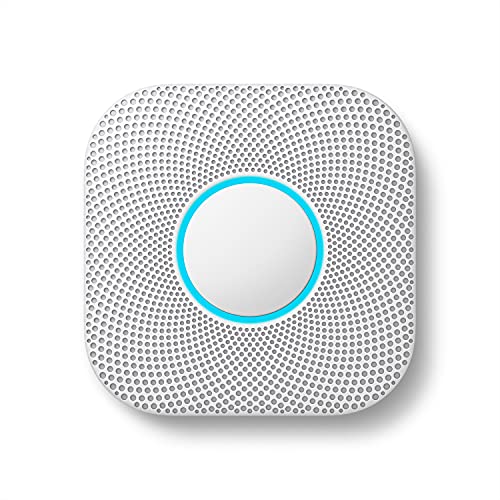
This is non-negotiable. Every home with a fuel-burning appliance needs a CO detector on every level, specifically near sleeping areas.
Modern detectors often combine smoke and CO detection. They provide peace of mind by alerting you before gas levels become dangerous. Test the batteries monthly.
Be Smart
5. Perform Regular Maintenance Checks
Make fireplace safety a seasonal habit. Clean the ash, check the gate hardware, and test your alarms. A well-maintained fireplace is a safe fireplace.
